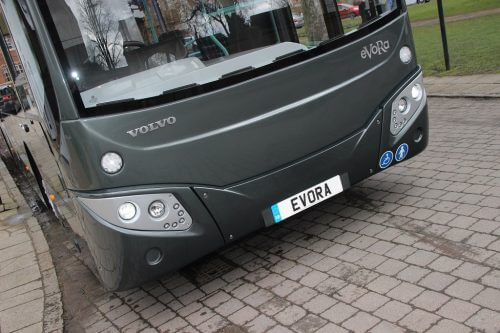
Based on his experiences of driving and riding it, Gareth Evans offers his thoughts on MCV’s new Volvo B8RLE-based eVoRa single-deck bus
It is often said that ‘beauty is in the eye of the beholder’ and it’s fair to say that applies to MCV’s new single-decker body style. The interior is what appealed to me most – but the outside has many features to like too.
I always think the external appearance of a coach or bus starts with the headlights – the ‘eyes’ if you like. The eVoRa has a ‘face,’ the look of which is enhanced by the LED lights when illuminated – including the v-like shape beneath the headlights. LEDs, which are used for indicators and marker lights alike, give the bus a welcome contemporary, almost Audi-like design feature.
Perhaps another more modern design cue is the use of top-hung wipers, which I believe alters the appearance at the front in a good way. It frees up the area beneath the windscreen for branding, aids visibility for the driver and gives the bus a cleaner look, while also allowing water to naturally fall down.
The rear styling looks particularly smart, while also being practical, with panels broken down into smaller sections, such as the vulnerable bottom corners and middle pillars. Checking the coolant, which is located on the offside rear pillar, is straightforward, thanks to the press button system, which then illuminates a green or red light according to whether a top-up is required. The top-up point itself is a good height. The fuel filler, which is located on the offside behind the back axle, is also at a good height. […]
By subscribing you will benefit from:
- Operator & Supplier Profiles
- Face-to-Face Interviews
- Lastest News
- Test Drives and Reviews
- Legal Updates
- Route Focus
- Industry Insider Opinions
- Passenger Perspective
- Vehicle Launches
- and much more!


